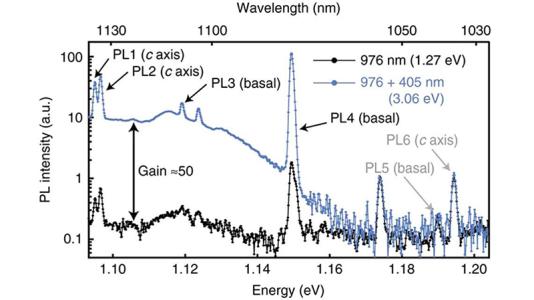
Scientific Achievement
We demonstrate optical charge control and photoluminescence enhancement of defects in SiC.
Significance and Impact
Understanding the charge stability and charge conversion dynamics of common defects in SiC for quantum information processing and nanoscale sensing.
Research Details
- Charge control of quantum defects provide enhanced spin-dependent readout and charge stability.
- Photoluminescence (PL) from divacancy (VV) defects increases by up to three orders of magnitude using near-ultraviolet excitation.
- Enhancement shows no degradation of the spin coherence time.
- Charge conversion remains stable for hours at cryogenic temperatures.
- Allows for spatial and persistent patterning of relative charge state populations for charge memory applications.
Argonne National Laboratory seeks solutions to pressing national problems in science and technology. The nation’s first national laboratory, Argonne conducts leading-edge basic and applied scientific research in virtually every scientific discipline. Argonne researchers work closely with researchers from hundreds of companies, universities, and federal, state and municipal agencies to help them solve their specific problems, advance America’s scientific leadership and prepare the nation for a better future. With employees from more than 60 nations, Argonne is managed by UChicago Argonne, LLC for the U.S. Department of Energy’s Office of Science.
The U.S. Department of Energy’s Office of Science is the single largest supporter of basic research in the physical sciences in the United States and is working to address some of the most pressing challenges of our time. For more information, visit https://energy.gov/science.